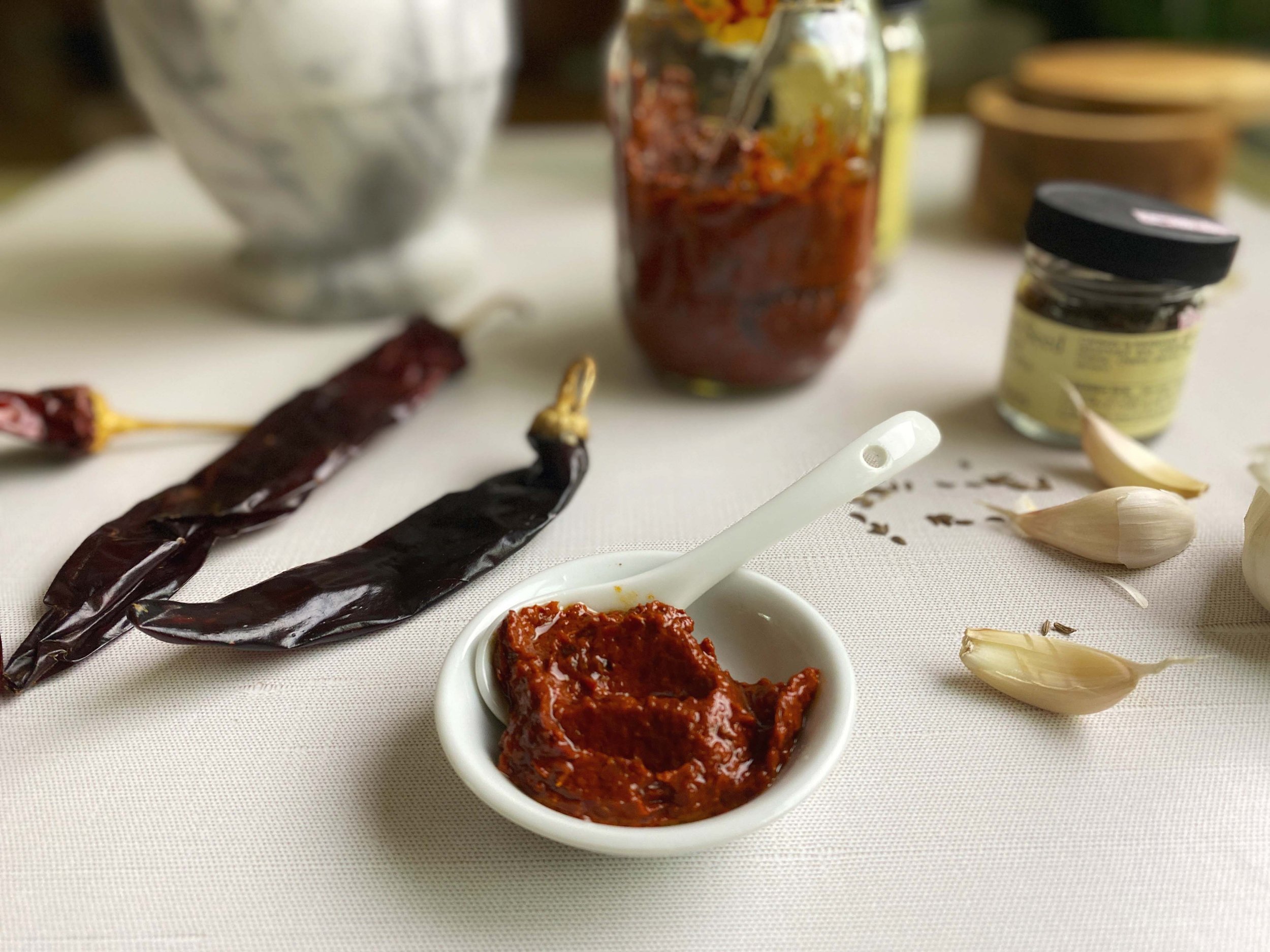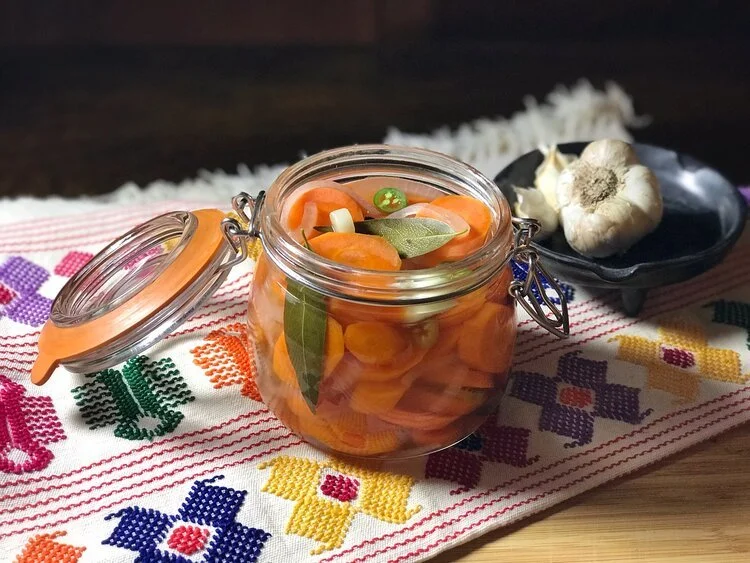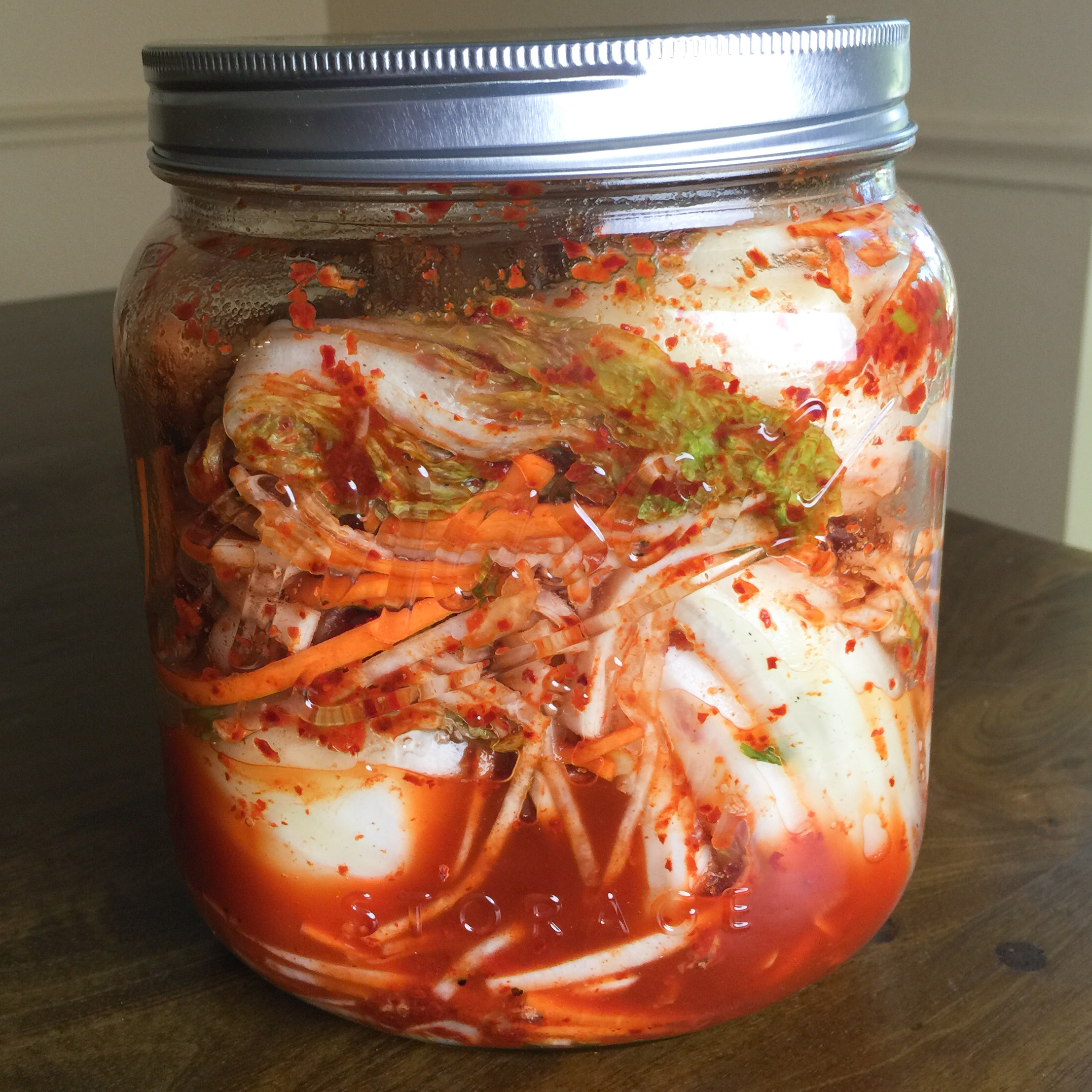By Leslie Brenner
Sure, the stuff in the tube is pretty darn good. But there’s nothing like homemade harissa — North Africa’s signature brick-red, aromatic chile paste.
Just ask UNESCO, which granted harissa from Tunisia a place on its “intangible cultural heritage” list last December.
Tunisian-style harissa is incredibly vibrant, velvety and alive, and though only a few ingredients comprise it, it has remarkable depth of flavor.
Given its worldwide popularity, you’d think there’d be recipes for it all over the internet. You’d be wrong: While there are a gazillion recipes using it as an ingredient, there are shockingly few recipes out there — at least on Anglophile and Francophile sites — for making something like the real Tunisian deal at home.
It’s quite simple to make; there are only four basic ingredients: dried chiles, caraway seeds, coriander seeds and garlic. Plus salt, of course, and olive oil to preserve it. All the formulas you might turn up that include things like tomato, cumin, cilantro or lemon juice? Maybe they’re good, maybe they’re not; hard to imagine that they improve upon the Tunisian classic.
It starts with dried chiles. In Tunisia they come from Cap Bon, Kairouan, Sidi Bouzid and Gabes, according to a film that was part of Tunisia’s submission for the UNESCO listing. Other sources mention Nabeul. In the Americas, the closest chiles to those are said to be guajillos and California chiles.
Snip them open with kitchen shears or scissors, shaking out the seeds and removing the stems. Seed removal is important for the best flavor in texture. Leave the seeds in, and you have a harissa that’s punishingly hot. Remove them, and you get incredible chile flavor, minus the fire. Instead of a tiny dab, you can swipe a piece of bread through harissa and relish it. Note that in the video, the woman making harissa from dried chiles shakes out the seeds before grinding them.
Rinse them, then soak them in boiling water for about 30 minutes, so they become soft and pliable. In Tunisia, a manual grinder — like a meat grinder — is traditionally used to grind the chiles. A food processor or blender does the job nicely.
For the spices — caraway and coriander seeds — grind them yourself for the best flavor. Sure, you could use pre-ground spices, but as long as you’re going to the trouble to make harissa, why cut corners?
Throw the spices, the rehydrated chiles, a few garlic cloves, salt and a little olive oil in the processor, and blitz away, until you have a smooth paste. That’s it. You have harissa. Maybe you’ll need to add a little water along the way.
Taste it, and swoon. Use it in a favorite recipe — go ahead, use more than you might if you were squeezing a tube. Stir it into a soup. Slather it on a roasted sweet potato. Or serve it with a tagine or couscous. Ready to store it? Put it in a jar, cover it with olive oil, and your supply will last in the fridge for months.
Want free recipes delivered to your inbox? Sign up below!
Did you enjoy this story? You might like:
READ: “Salsa macha is the hottest condiment of the year, and we’ve got the best recipe”
READ: “It's a semolina granule, it's a dreamy stew, it's a Mahgreb celebration: couscous!”
READ: “Sweet potatoes are here! Don’t wait till Thanksgiving to celebrate one of earth’s perfect foods”










